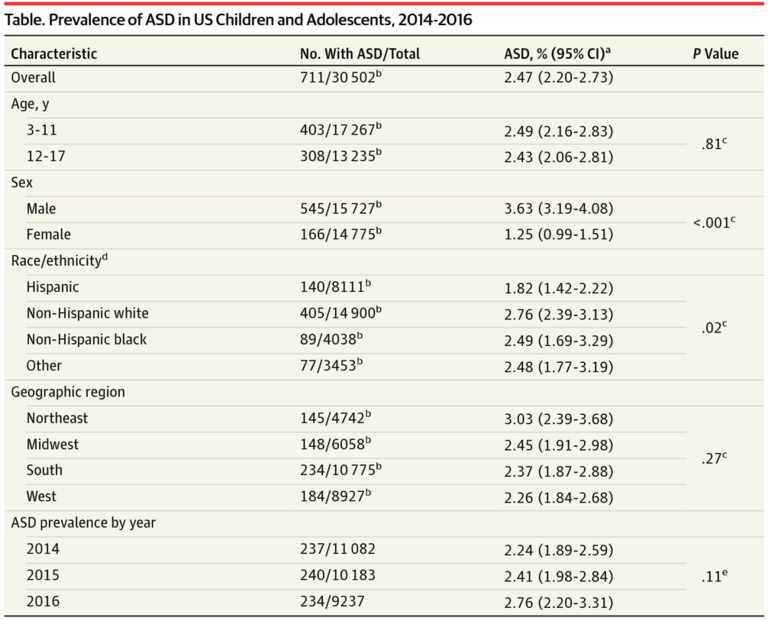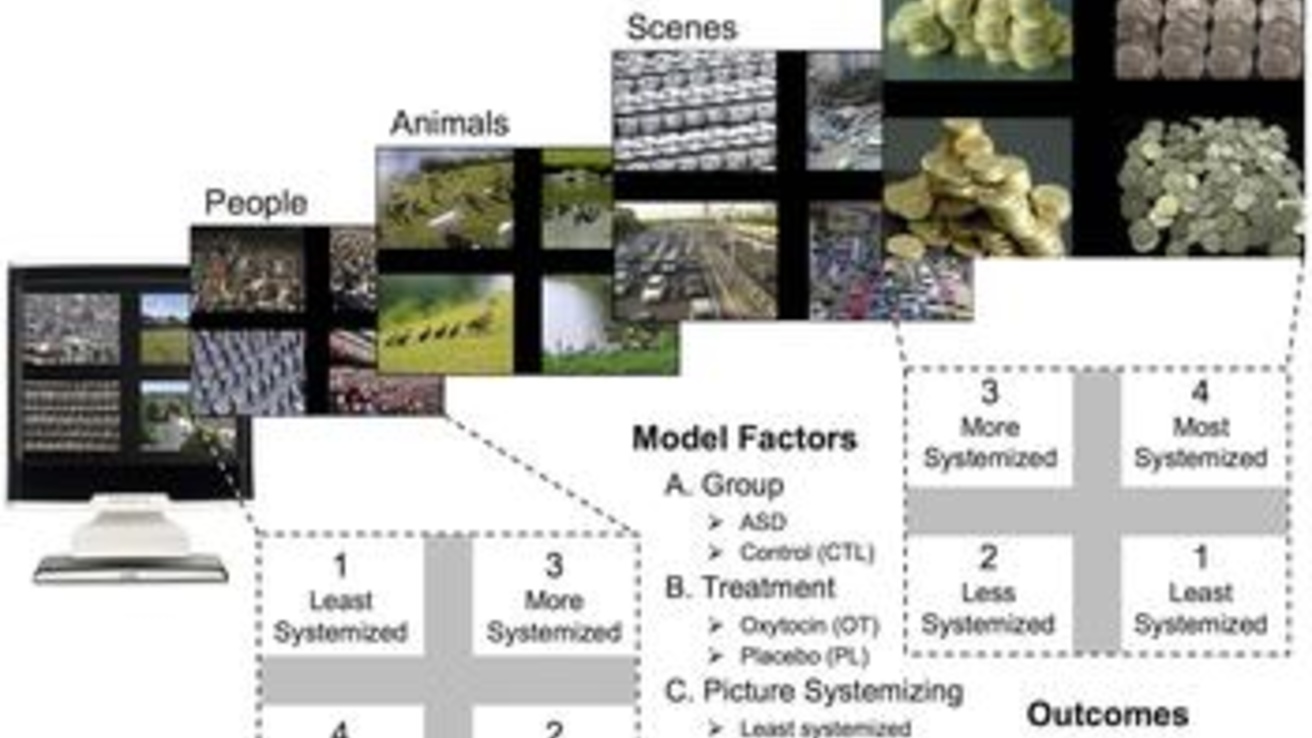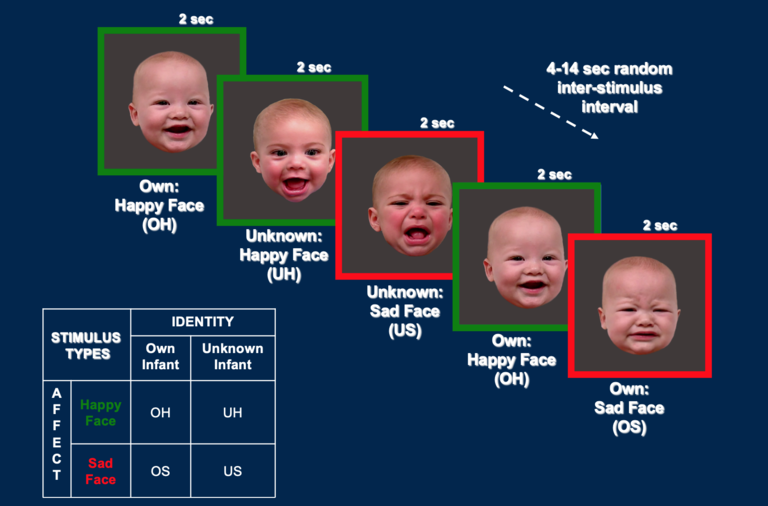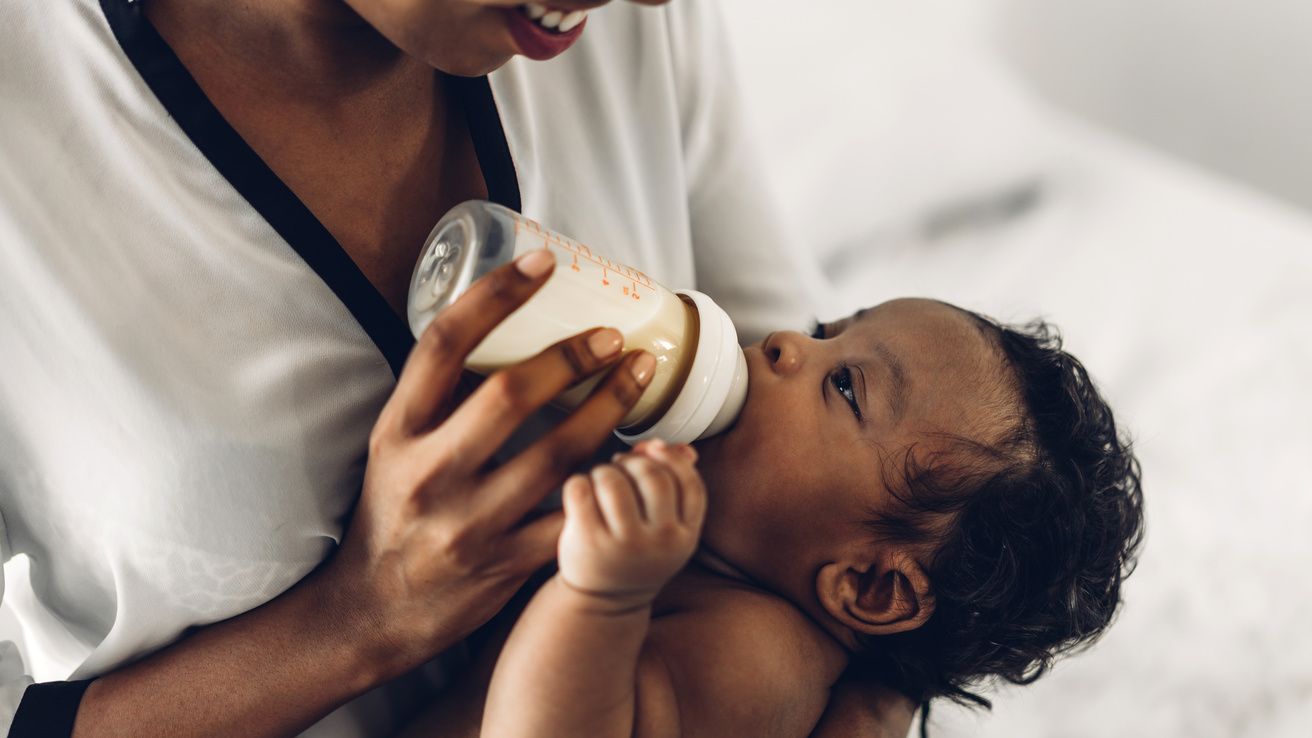Year
Summaries
The goal of this review paper is to explore modifiable pathways for intervention in children at risk for ASD, specifically examining how early social experience may be correlated with epigenetic change in genes associated with autism. We present an innovative model which proposes that polygenic risk and social experience (via epigenetic mechanisms) may both contribute to the observed ASD phenotype.
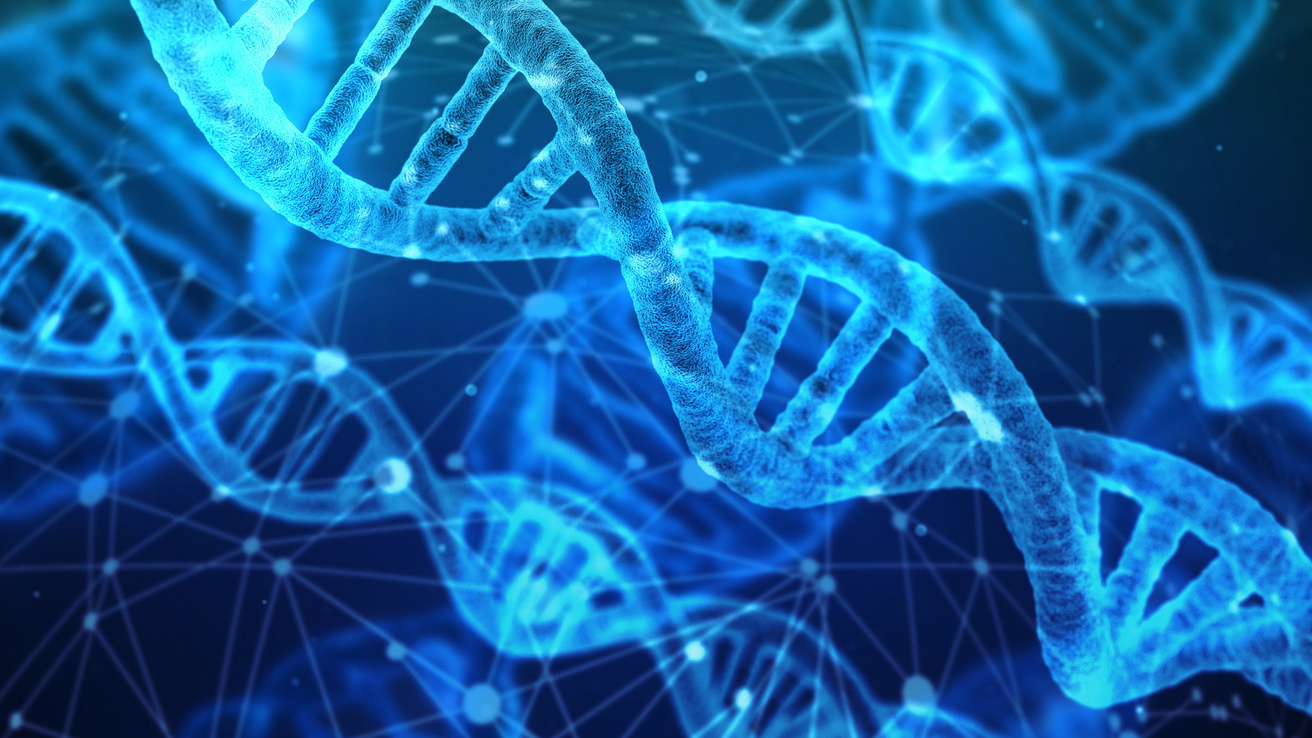
The first study to look at nonsocial changes intranasal oxytocin has on children with autism spectrum disorder (ASD), compared to a control group. There were 16 children in the ASD group and 16 children in the control group. Within the study, children looked at pictures of objects that were organized and others that were unorganized and information was gathered using an eye-tracking machine. Children with autism often fixate on objects that are organized, but when given oxytocin intranasally, they did not. Oppositely, children without autism fixated on the pictures that were organized when given oxytocin intranasally.
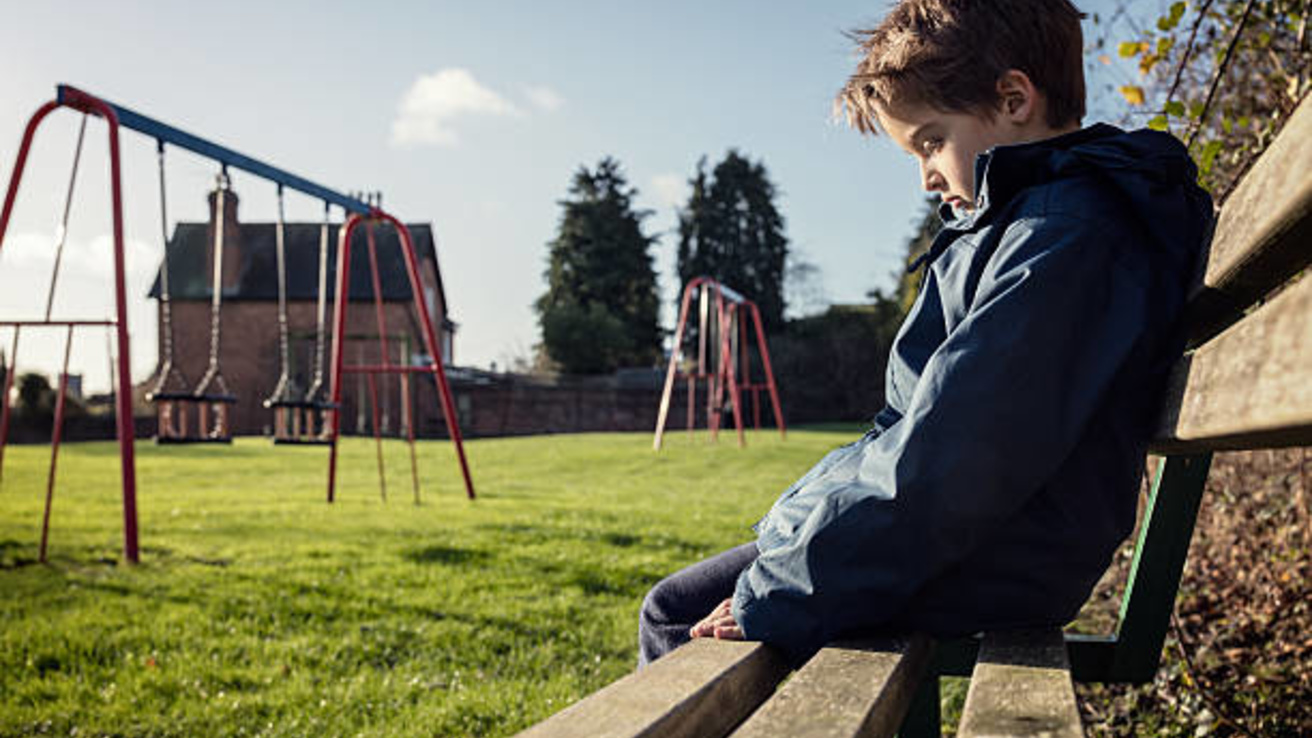
A study that looked at how maltreatment affected 7214 children throughout adolescence and young adulthood. Different types of maltreatment were reviewed, but they were most interested in mental health outcomes because it has the least amount of research conducted. Results included lower cognition scores, substance use, addiction, and pregnancy. Children who were exposed to emotional abuse and neglect lived lower quality of lives than children who experienced sexual and physical abuse. Although causation was not able to be concluded between maltreatment and mental health, they say that it likely influences behavior and development.

2018
A study done using the NHIS survey to evaluate the trends in prevalence of Autism spectrum disorder over the years. Autism spectrum disorder (ASD) is a significant neurodevelopmental disorder that can take a toll on families and society. Previously, ASD prevalence was steadily increasing but has come to a plateau more recently.
A study done using the NHIS survey of 186,457 children and adolescents to evaluate the trends in prevalence of Attention-deficit/hyperactivity disorder over 20 years. This disorder is characterized by inattention, hyperactivity, and impulsivity. The results included prevalence increasing from 6.1% to 10.2%, but more research needs to be done to conclude why this is happening.
The first study to look at nonsocial changes intranasal oxytocin has on children with autism spectrum disorder (ASD), compared to a control group. There were 16 children in the ASD group and 16 children in the control group. Within the study, children looked at pictures of objects that were organized and others that were unorganized and information was gathered using an eye-tracking machine. Children with autism often fixate on objects that are organized, but when given oxytocin intranasally, they did not. Oppositely, children without autism fixated on the pictures that were organized when given oxytocin intranasally.
2017
Little research has been done to connect maternal addiction and the effect it has on their children. This study uses a functional MRI to look at mothers with addiction 6 months postpartum. When looking at happy faces of their own infant, mothers with addiction had decreased oxytocin and dopamine. Oppositely, mothers without addiction show increased levels of oxytocin and dopamine when looking at their own child with a happy face. This is the first research study to show the relationship between reduced activation and mothers with addiction.
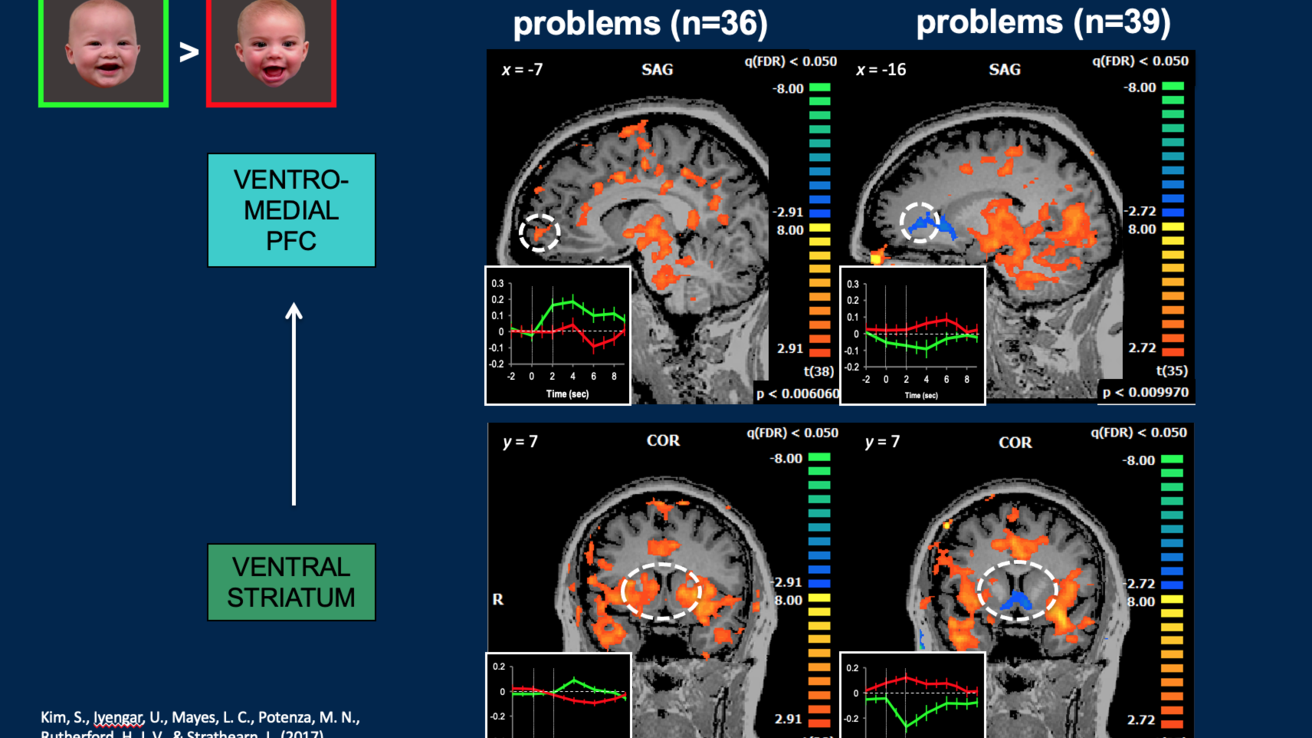
A study that looks at the relationship between maternal oxytocin and engagement with their infant. In the study, 50 mothers were researched with their 7-month-old infants. The research found that mothers with low oxytocin responses had a significant decrease in infant gaze when infants were in distress. This was not observed in mothers with high oxytocin responses.

Maternal neglect is a serious issue concerning the care of an infant. This paper was written to better understand how to prevent and how to approach maternal neglect. It looks at the processes in the brain and what happens when neglect is found. Decreased oxytocin and dopamine are seen in response to infants faces in infants that have an insecure or dismissive relationship with their infants. They are currently testing whether intranasal oxytocin can reverse some of the neurological differences seen between neglectful mothers and involved mothers.

2009
Infant emotions, such as crying and smiling, are big indicators of maternal behavior, activating reward centers of the brain that activate the hormone dopamine. The role of oxytocin in maternal behavior is unknown but in animals it is a hormone of attachment. This study looked at 30 first-time mothers to test attachment and brain responses. For secure mothers, viewing smiling and crying faces showed greater activation of reward in the brain. Peripheral oxytocin response was also greater in mothers of infants that were 7 months. In insecure mothers, their brains showed greater response to their own infant's sad faces. The research found that differences in mothers may be due to the development of different hormone systems.
A study that determines whether nature and nurture cause autism. Kanner was the first to examine this relationship, and he found that children were genetically predisposed and affected by parenting behavior. As originally found, Dr. Strathearn also found that children with autism have similar characteristics as their parents such as face processing deficits. He also says that face processing deficits could lead further to parental detachment which could cause deficits in their children. As epigenetics evolves, social factors may also affect the development more. Overall, nature and nurture do have to do with the cause of autism.

